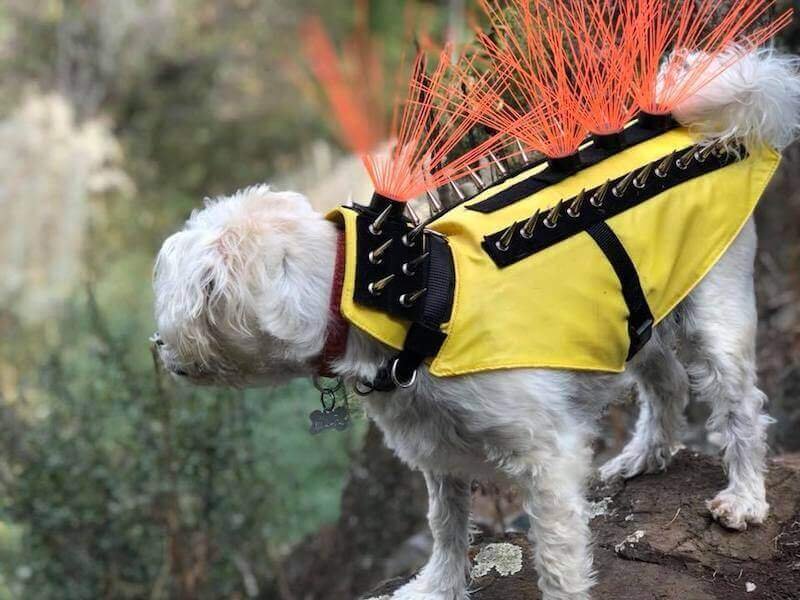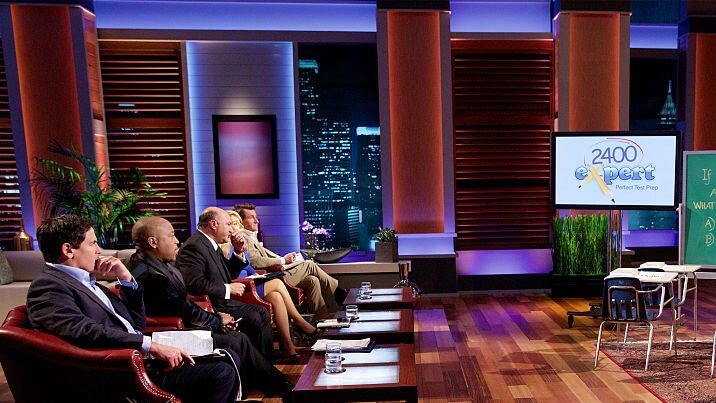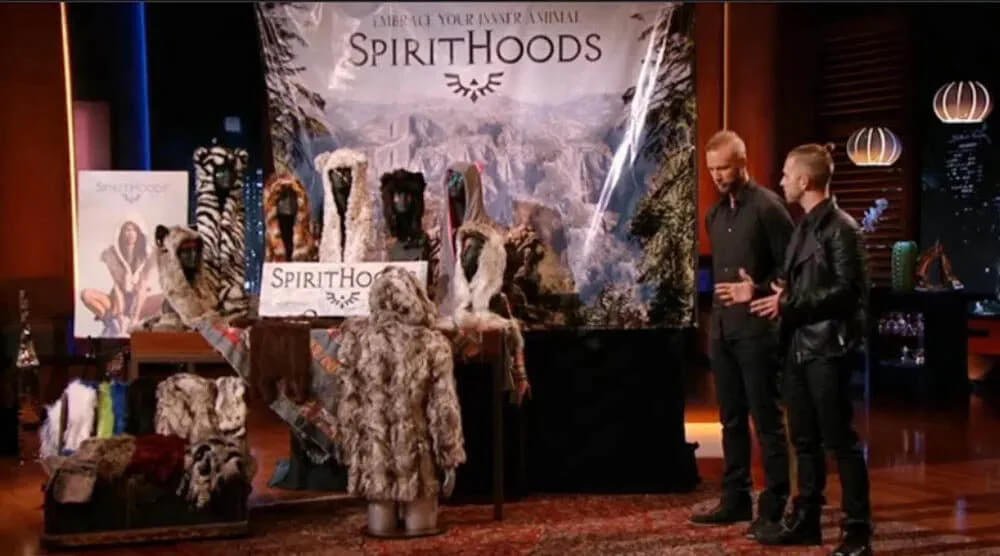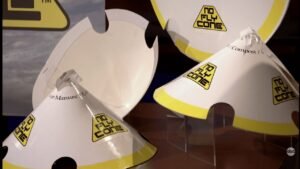Let’s crush a Shark Tank myth: scoring a deal on national TV isn’t the finish line. It’s just a highlight reel. Real winners? They make money, win customers, and stay alive long after the credits roll. Coyote Vest’s story is Exhibit A.
You saw it: a tiny dog in spiky armor parading in front of the Sharks. The pitch was weird, memorable, and brutally honest. Most viewers chuckled. Real hustlers sat up straight. Because Coyote Vest isn’t a joke—it’s what happens when someone channels heartbreak into a business that protects real pets against real threats.
This isn’t your usual funny pet costume. It’s a gritty startup tale with raw lessons, missed deals, and a $4 million company still barking in 2025. Why’d it work? Let’s get into how Coyote Vest outlasted Shark Tank buzz and turned personal pain into commercial success.
Contents
Toggle2. The Story: A Coyote Attack Triggered a Startup
You know those crazy shower idea founders? This isn’t that. Paul and Pamela Mott built Coyote Vest because they lost their dog, Buffy, to a coyote. Call it tragedy or fate—either way, it’s the most honest kind of why you’ll ever see.
Paul was walking his dog at a park. A coyote came out of nowhere, snatched Buffy, and vanished. That kind of pain doesn’t leave you. Most people might never return to a dog park. Paul did the opposite—he started sketching plans for armor. This business was born out of grief and pure determination.
Here’s the lesson: the best products solve genuinely painful problems. If you’ve lived the problem, you’ll fight for your solution harder than any serial entrepreneur ever will.

3. What Makes Coyote Vest Different
Let’s be clear. A lot of pet products make you smile, but only a few actually save a life. Coyote Vest makes your dog look like it’s starring in Mad Max—but there’s nothing silly about the tech.
We’re talking real features:
- Kevlar paneling for puncture resistance. Not just for looks—this is the same material used in body armor.
- Hard plastic spikes around the neck and spine. Sharp enough to scare off a wild animal but not so deadly that they’ll hurt another pet.
- Bright, bold colors: yellow, orange, turquoise—the point is to warn predators don’t try me.
- Add-ons like whiskers that splay out and further intimidate, giving any would-be attacker second thoughts.
Is this pet fashion? No. It’s literal defense. Shelving this with the Halloween costumes is missing the point. It’s protection for those crazy hikes, late-night walks, and every backyard where coyotes roam.
You can buy similar cute dog stuff at any pet chain. But nothing else out there fights off fangs. And if you know California or Arizona, you know how real the coyote threat is.
4. Shark Tank Pitch: No Fluff, Just the Numbers
Let’s break this pitch down like you’re in the room: Paul and Pamela Mott walked onto Season 10, Episode 24, armed with heartbreak and hardcore numbers. Their ask? $250,000 for 10% equity—a bold $2.5 million valuation.
Now, if you’ve seen Shark Tank, you know those numbers alone raise Sharky eyebrows. But the Motts had traction. They already pulled in $570,000 in direct sales—no VC, just hustle and grit. That tells the Sharks (and us) they already proved demand.
They told the story—pain, solution, proof. The presentation? Tight. The product demo? Memorable. They didn’t sugarcoat. They looked the Sharks in the eye and said, This will save dogs’ lives. No fluff, no apologies.
Want to know why some founders get chewed up? It’s chasing hype instead of presenting numbers. These two just laid it out.

5. Net Worth: Where Coyote Vest Stands in 2025
SharkWorth did the math for 2025. Here’s the straight answer: Coyote Vest came into the Tank with big dreams; they’re now sitting at an estimated $4 million net worth.
Is that a unicorn? No. Is it a joke? Not even close. Four million is serious for a niche consumer product—especially without a celebrity Shark, fancy ad agency, or viral dance campaign.
Let’s look at how they got there:
- Steady sales across years, not months.
- Expansion into independent stores after Shark Tank.
- Online demand spikes whenever media buzzes—even without an investor’s cash behind the push.
Margins? We’re not seeing fancy VC scale, but when you make something unique and charge a premium for real problem-solving… that’s how you build a business that survives.
Compare that to dozens of Shark Tank darlings with splashy deals and no brand left five years later. Coyote Vest? Still here, still pushing.
6. Business Reality: No Deal, No Problem
This is the part of the story TV doesn’t highlight: Paul and Pamela walked out of Shark Tank with zero investment. Some fans called it a flop. That’s laughable if you’ve ever run a small business.
Shark Tank isn’t just about the money; it’s about the signal boost. Website crashed? Good. That means people care. Social media? Blew up. Retailers started calling. For the right business, just standing in the Tank can multiply your sales overnight.
Sales after their Shark Tank episode jumped—no surprise. They kept riding that wave, pushed more products, and opened up to new retail channels. At least a dozen mom-and-pop stores picked up the brand. They kept it DTC (direct to consumer) and preferred to own their growth and control their story.
Too many founders chase TV stardom or think one handshake with Mark Cuban means job done. Paul and Pamela got their 8 minutes, then hustled just as hard the next morning.
7. Current Status: Is Coyote Vest Still Barking?
Let’s kill the rumor mill—Coyote Vest is alive and well. They’re now sitting on lifetime sales close to $2 million (as of July 2024), and they’re still climbing. The company’s website is rolling. New colorways, new accessories, and growth beyond just dogs—if you’re a small-pet owner, you have options.
Product innovation didn’t stop. They listened to their audience: Can you make this for cats?—done. Can I get a brighter color?—already shipped. Will this protect my chihuahua from a hawk?—their FAQ has you covered.
Coyote Vest isn’t just a vest company. They’ve built a full-on protective gear category. If you check Reddit, pet forums, or dog park Facebook groups, these vests come up whenever someone posts, How do I protect my dog from coyotes?
That’s the real test of survival: when your customers sell the product for you.
8. Lessons for Entrepreneurs: The Real Takeaways
Want to build a business like Coyote Vest? Here’s what you should copy:
1. Solve your own pain. The Motts had a why so strong, nothing could shake them.
2. Test the market before you ask for millions. $570K in sales before pitching? That’s validation, not vapor.
3. Don’t fold after TV rejection. No deal? No problem. Hustle matters more than any one investor.
4. Stay memorable, but deliver real value. Weird marketing opens doors, but staying power comes from solving real problems.
5. Lean into the niche. Coyote Vest doesn’t try to please everyone—they dominate their corner.
Want a Bombas-size exit? That’s rare. Want to wake up every day with a growing, lasting business? Do what Coyote Vest did: listen to your customer, own your space, and ignore the critics.
9. Conclusion: Not Every Winner Walks Out With a Deal
Let’s cut through the feel-good Shark Tank montage—most founders will hear no. That’s normal. The real game starts after rejection. Coyote Vest didn’t just survive—they stacked cash, found fans, and built their own security net.
TV gave them a boost, but discipline, customer focus, and raw hustle did the rest. If you ask me, getting told no by a Shark is the best thing that ever happened to their business. They owned every win and every lesson.
That’s what actually works in business: not flashy one-shot deals, but persistent, practical, customer-driven thinking—especially when the Sharks swim off into the distance.
FAQs
1. Is Coyote Vest from Shark Tank still in business?
Yes—Coyote Vest is alive, growing, and still protecting pets nationwide.
2. Did Coyote Vest ever get a deal after Shark Tank?
No, Paul and Pamela didn’t close a deal during their Season 10 appearance or afterward. They went solo and made it work.
3. How much is Coyote Vest worth now?
Coyote Vest is worth about $4 million as of 2025, according to SharkWorth and business reports.
4. Where can I buy Coyote Vest products?
Buy direct on coyotevest.com or at select independent pet stores. Stick to their website for the full range.
5. Do the vests actually stop coyote attacks?
Nothing’s foolproof, but real customers report the vests scare off coyotes and give you, the owner, precious time.
6. Who founded Coyote Vest and why?
Paul and Pamela Mott founded Coyote Vest after losing their dog Buffy in a tragic coyote attack.
7. Has the company released new products since the show?
Yes. They’ve added cat gear, color options, and more accessories for all kinds of small pets.
8. How did Shark Tank impact Coyote Vest’s sales?
Big spike after the broadcast—site traffic, orders, and word-of-mouth all exploded for months.
Here’s the real Shark Tank lesson: if you know your numbers, know your value, and can out-hustle anyone in your space, you’ll win—deal or no deal. Coyote Vest proves it.










